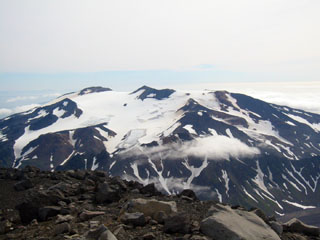Report on Takawangha (United States) — 1 February-7 February 2017
Smithsonian Institution / US Geological Survey
Weekly Volcanic Activity Report, 1 February-7 February 2017
Managing Editor: Sally Sennert.
Please cite this report as:
Global Volcanism Program, 2017. Report on Takawangha (United States) (Sennert, S, ed.). Weekly Volcanic Activity Report, 1 February-7 February 2017. Smithsonian Institution and US Geological Survey.
Takawangha
United States
51.873°N, 178.006°W; summit elev. 1449 m
All times are local (unless otherwise noted)
On 3 February AVO stated that the seismic swarm that began at Takawangha on 23 January continued but at a decreased rate and intensity. The rate of earthquakes peaked at 190 events on 24 January, and since then had steadily declined; 2-8 events per day were recorded from late January to 3 February. Most of the events were located 7-8 km ESE, at shallow depths. The Aviation Color Code remained at Yellow and the Volcano Alert Level remained at Advisory.
Geological Summary. Takawangha is a youthful volcano with an ice-filled caldera on northern Tanaga Island, near the western end of the Andreanof Islands. It lies across a saddle from historically active Tanaga volcano to the west; older, deeply eroded volcanoes lie adjacent to the east. The summit of the dominantly basaltic to basaltic andesite volcano is largely ice covered, with the exception of five Holocene craters that during the last few thousand years produced explosive eruptions and lava flows that reached the lower flanks. No historical eruptions are known, although radiocarbon dating indicates explosive eruptions have occurred within the past several hundred years.
Source: US Geological Survey Alaska Volcano Observatory (AVO)

